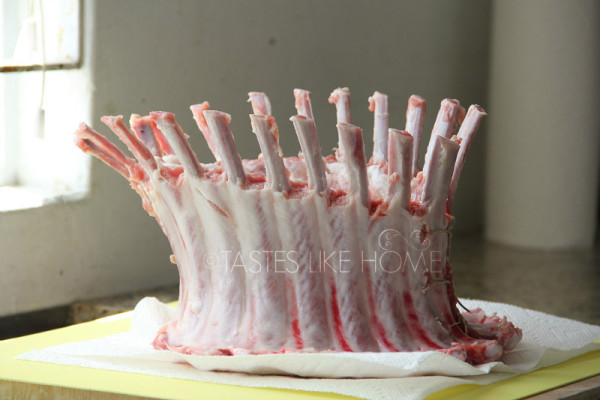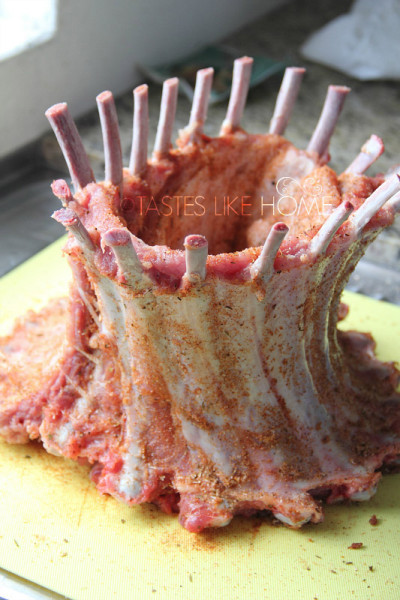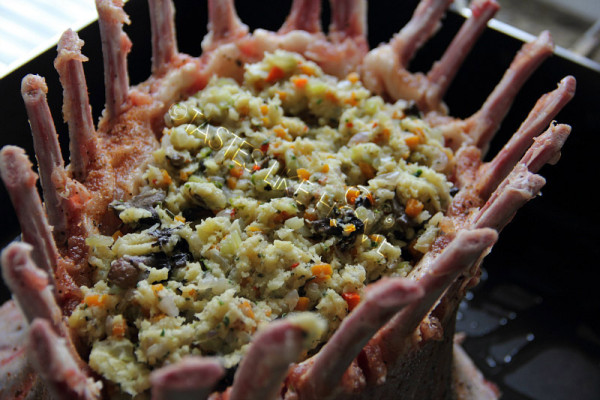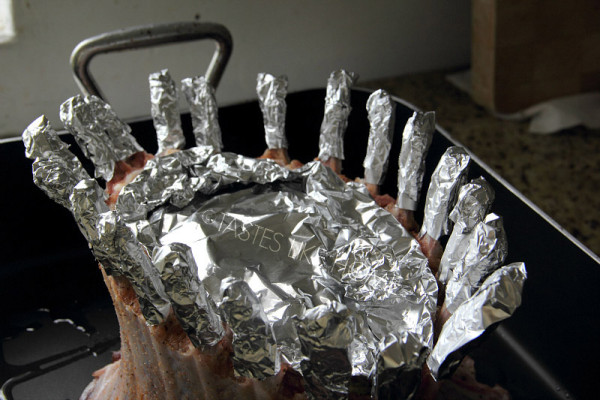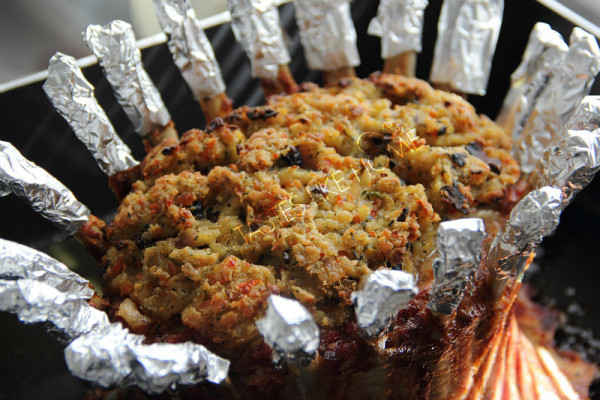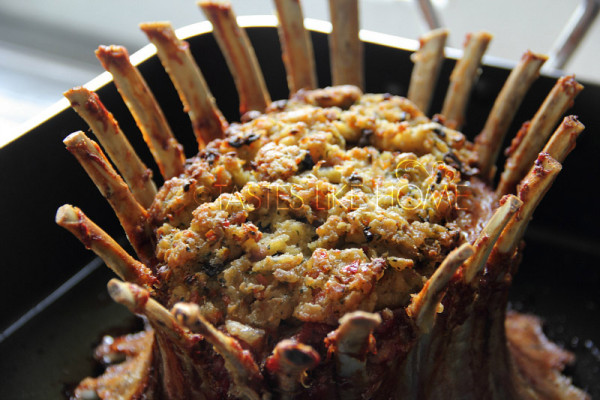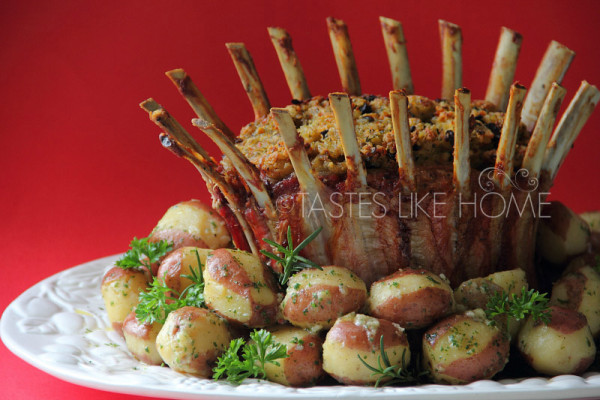Hi Everyone,
Make way for a princely cut of meat that will impress the heck out of everyone at your holiday table – a crown roast of pork. Or lamb.
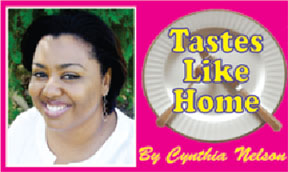 The main Christmas meal is not only about food and fellowship, it is also about outdoing yourself. Each year, we home cooks always seem to be in competition with ourselves; we have to do better than we did last year. We have to wow the family (and friends). We’ve got to come up with something different. You know what I am talking about right? Why do we do this? Our loved ones plead with us, “Don’t fuss too much this year… don’t make so many things like you did last year… don’t…” You think we listen? Nah! We are in our own zone. We’ve got to one-up ourselves. Well, just in case you haven’t yet settled on the pièce de résistance, for your main holiday meal, consider making a stuffed crown roast of pork or lamb, or both, depending on the size of your gathering. Actually serving both types of meats would take care of those who don’t eat pork or lamb.
The main Christmas meal is not only about food and fellowship, it is also about outdoing yourself. Each year, we home cooks always seem to be in competition with ourselves; we have to do better than we did last year. We have to wow the family (and friends). We’ve got to come up with something different. You know what I am talking about right? Why do we do this? Our loved ones plead with us, “Don’t fuss too much this year… don’t make so many things like you did last year… don’t…” You think we listen? Nah! We are in our own zone. We’ve got to one-up ourselves. Well, just in case you haven’t yet settled on the pièce de résistance, for your main holiday meal, consider making a stuffed crown roast of pork or lamb, or both, depending on the size of your gathering. Actually serving both types of meats would take care of those who don’t eat pork or lamb.
A crown roast has a good meat to bone ratio. There’s ample, meat and for those of us bone lovers, there are bones for us to rid of meat and gnaw at. Sigh, all is well with the world.
Though the idea of cooking a crown roast may seem intimidating, it really is not. If you have ever roasted any type of large piece of meat or a whole chicken, you can definitely do this. The hardest part – preparing the meat – is best done by the butchers. Tell them what you want, better yet, show them what you want and they will be able to do it. Take along a copy of this column.
Here’s what you need to know.
The crown roast is taken from the rib section of the loin cut of the animal. The meat when cut, and tied in a circle, with the meaty part at the bottom and the bones standing upright, is called a crown roast because it resembles a crown. The butcher will need to French the bones, what this means is that the bones at the top part of the roast need to be scrapped to remove some of the meat, leaving the bones at the top of the roast, clean. Have a look at first photograph in the slide gallery above. (The other photos take you through the various stages of the recipe.)
When cooking a crown roast it can be done without stuffing but having gone to such lengths of acquiring such a special cut, it seems futile not to stuff it. Besides, the stuffing works as a side dish, and what’s the holiday without stuffing, crown roast or no crown roast?
Let me walk you through how to make this showstopper.
Prep
It’s a large piece of meat and I like to give such cuts an overnight dry brine. Dry brine is all the rave now but you and I have been doing it for a long time, we call it seasoning overnight. For this recipe I used an all-purpose dry seasoning mix that has in salt so I did not need to add more salt to season the meat. Read the ingredients list on the seasoning mix you are using. Another option is to season with freshly made green seasoning.
Rub the seasoning all over the meat – inside and out, then wrap it in plastic wrap, put it in a 2-gallon or similar capacity plastic bag, transfer it to a large plate or platter and put it in the refrigerator overnight. When you are ready to cook the crown roast, bring it up to room temperature. That time will vary depending on your location.
Stuffing
If you have a tried and true or favourite stuffing recipe that you make, then use that, if not, try this recipe that I made for the roast.
- ½ pound mushrooms, finely chopped
- 1 ½ cups finely chopped onions
- 1 ½ cups finely chopped stalk celery (1/2 cup of the regular leaf celery)
- 1 ½ cups finely chopped carrots
- Salt and black pepper to taste
- 1 heaped tablespoon finely minced fresh rosemary
- 1 tablespoon minced fresh thyme
- 5 cloves garlic, finely minced
- Minced hot pepper to taste
- 5 cups cubed bread (substitute with 7 oz. panko)
- 1 + 2/3 cups hot chicken/vegetable stock
- 1 cup roughly chopped walnuts
A – ¼ cup of raisins and ½ cup sausage meat can be added to the stuffing if that is your preference.
To make the stuffing, heat 5 tablespoons of oil in a pan over medium heat until hot, then add the mushrooms, onions, celery, and carrots along with salt and pepper to taste, toss to mix and cook until the vegetables are softened, about 6 minutes. You will need to reduce the heat to low because you do not want to brown the ingredients, only soften them and let them release their flavours.
Next, add the rosemary, thyme, garlic and hot pepper to the veggies and let it cook for 4 to 5 minutes.
Place the cubed bread, or panko if using, in a large bowl. Add all the cooked veggies to the breadc-rumbs/bread. Scrape the pan to remove every bit. Pour in the chicken stock and toss everything together. Taste for seasoning and if necessary, add a little salt and pepper to taste. Mix in the nuts. If you are using raisins, now would be the time to add them too. If you are planning to add raw sausage meat, brown the sausage meat first, remove it from the pan and then cook the veggies. Add back the meat to the mixture the same time you are adding in the nuts and raisins.
Set aside the stuffing to cool completely. Do not underestimate this stage because remember you are going to be adding it to raw meat.
Assembling
Preheat the oven to 375 degrees F with a rack on the lower level of the oven or the second one from the bottom; you want to ensure that there is enough headroom for the crown roast.
When you remove the meat from the refrigerator, there will be some moisture, pat the meat dry with kitchen towels.
You will need a large roasting pan to cook the stuffed crown roast. Rub or brush some oil in the pan and transfer the room temperature roast to the centre of the pan.
Spoon the cooled stuffing into the centre of the roast. Do not be afraid to pack the stuffing a little compact, but not too tightly as the stuffing expands and rises when cooked.
Now for the final touches before adding the roast to the oven. Tear small pieces of foil and wrap them around the exposed bones of the roast. This is so that the tips don’t get burnt and charred.
When you’re done protecting the bones with the foil, tear off a larger piece of foil and place it directly onto the stuffing, covering it, as shown in photograph.
Cooking
Transfer the pan with the stuffed roast to the oven. The cooking time will vary depending on the weight of your meat; average 25 minutes for each pound (make a note of the weight when you buy the roast). 30 minutes before the total cooking time is up, remove the foil covering the stuffing so that it can form a crust.
When the roast is done, remove the pan from the oven, cover loosely with foil and let the roast rest for at least 30 minutes before cutting and serving.
Serving
Cut and discard the strings, as well as the foil from the bone tips. Slice the roast by cutting between the ribs. Serve along with stuffing and gravy (if you made any).
Cook’s Notes
If you have any raw stuffing left over, put it in a buttered dish and bake in a 350 degrees F oven for 30 minutes or until it has risen and developed a crust.
This recipe was based on a 5-pound roast. If your roast is larger, then add more ingredients for the stuffing.
Make this dish and watch your subjects, ahem, family and friends bow to the power of you conquering the crown.
Merry Christmas everybody!
Cynthia

